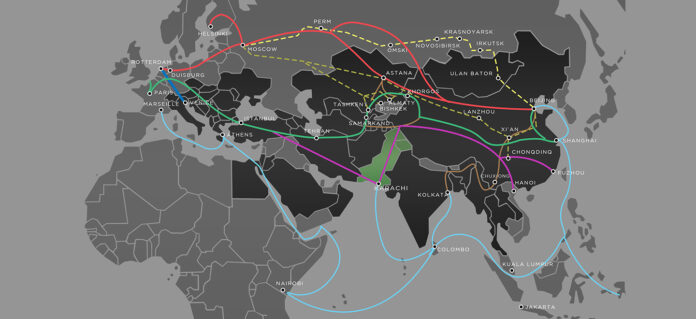ISLAMABAD: With the second phase of the multi-billion-dollar China, Pakistan Economic Corridor (CPEC) launched, Pakistan would now have opportunities to collaborate with China and 60 other countries partnering in the Belt and Road Initiative (BRI).
Experts attending a policy dialogue titled ‘National Agriculture and Food Security in Pakistan’ held here at Institute of Policy Studies (IPS) said that the CPEC is improving Pakistan’s connectivity not only within itself and China, but with over 60 other BRI countries as well.
“We can collaborate with our partners in the social sector. There is a need for substantial emphasis on the development of the country’s agriculture sector, which offers huge prospects of growth and trade,” said Pakistan Agricultural Research Council (PARC) Chairman Dr Muhammad Azeem Khan here at the event held in collaboration with Pakistan Agriculture Scientists Forum (PAS Forum).
University of Haripur Vice-Chancellor (VC) and Pakistan Council for Science and Technology (PCST) ex-chairman Professor Dr Anwar-ul-Hasan Gilani, Faisalabad University of Agriculture Professor Dr Amanullah Malik, IPS Executive President Khalid Rahman, and PAS Forum President Dr Abdul Wakeel also spoke on the occasion.
Presenting an overview of Pakistan’s agriculture sector, Dr Azeem Khan emphasised the need of enhancing the productivity of various potential sub-sectors of agriculture, not only with an aim to address the country’s food security concerns, but also to alleviate it for international trade.
Khan rued that Pakistan was a food exporting country till 2013 but became a food importing country thereafter. However, he observed that CPEC’s second phase offers a good opportunity to help the agriculture sector to recover, but the onus largely lies with the nation to set targets and strategies carefully in order to benefit from the forthcoming opportunities.
The PARC chairman was all for alleviating the agriculture sector via business-oriented model, which in his opinion, could only be done through value addition i.e. converting raw materials into standard commercial products and brands.
He highlighted that combinations of different commodities and products being produced alongside the CPEC routes boast significant prospects in this regard. There is a huge potential for the production and export of fodder, edible oils and palm oil, whereas pulses and oil seeds are some other lucrative areas to invest in.
The speaker, however, pointed out that the post-harvest losses still remain a concern in the country, before adding that the solution lies in careful measures taken in the areas of production, diversification, post-harvest handling, processing, certification, and value addition – all aimed at converting the harvest into high-value products while enabling them to maintain apex standards for international trade.
Khan also spoke fervently about the prevalent state of malnutrition in Pakistan, terming it unprecedentedly high while maintaining that a nutritionally food secure Pakistan should be the country’s top most goal.
Dr Malik spoke about potentials and opportunities for Pakistan’s agricultural sector in relevance to CPEC mega projects. He mentioned several agriculture items in which Pakistan could enjoy a competitive advantage over the rest of the world, especially when it comes to China.
The professor said that China is the world’s biggest farm produce importer, with its imports making up to 10 per cent of global farm produce trade. The country is a net importer of bulk agriculture products and there has been rapid growth in its imports from Belt and Road countries off-late.
Pakistan too can target some of its exports to China such as soybean, barley, corn, wheat and cereals. Rice is the country’s major export to China but there is a lot more potential to it as well. In terms of fruit, cherries, grapes, mangoes, guavas and oranges are some of the products that can be looked at. He, however, added that about 70 per cent of China’s agriculture imports come from the USA, Brazil, South East Asia, European Union (EU) and Australia, and it will be very challenging, yet necessary, to raise our quality standards to compete with these countries.
Pakistan was lacking in utilising technology for its agricultural requirements when compared to other countries, Dr Gilani lamented while pressing for the need to make use of modern technological systems and methods that could cope with present-day challenges like global warming and climate change.
The speaker stressed focusing and investing in local capacity building initiatives as well as on improving access to international markets. He urged immediate measures such as making crops nutritive and resilient to climate change, rescuing of more farmland, empowering of small landholders, de-urbanisation, preservation of water, recycling of crop/livestock waste and saving of food through public awareness drives if Pakistan is to answer its rising food security threats.
























